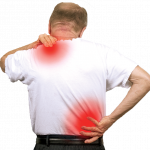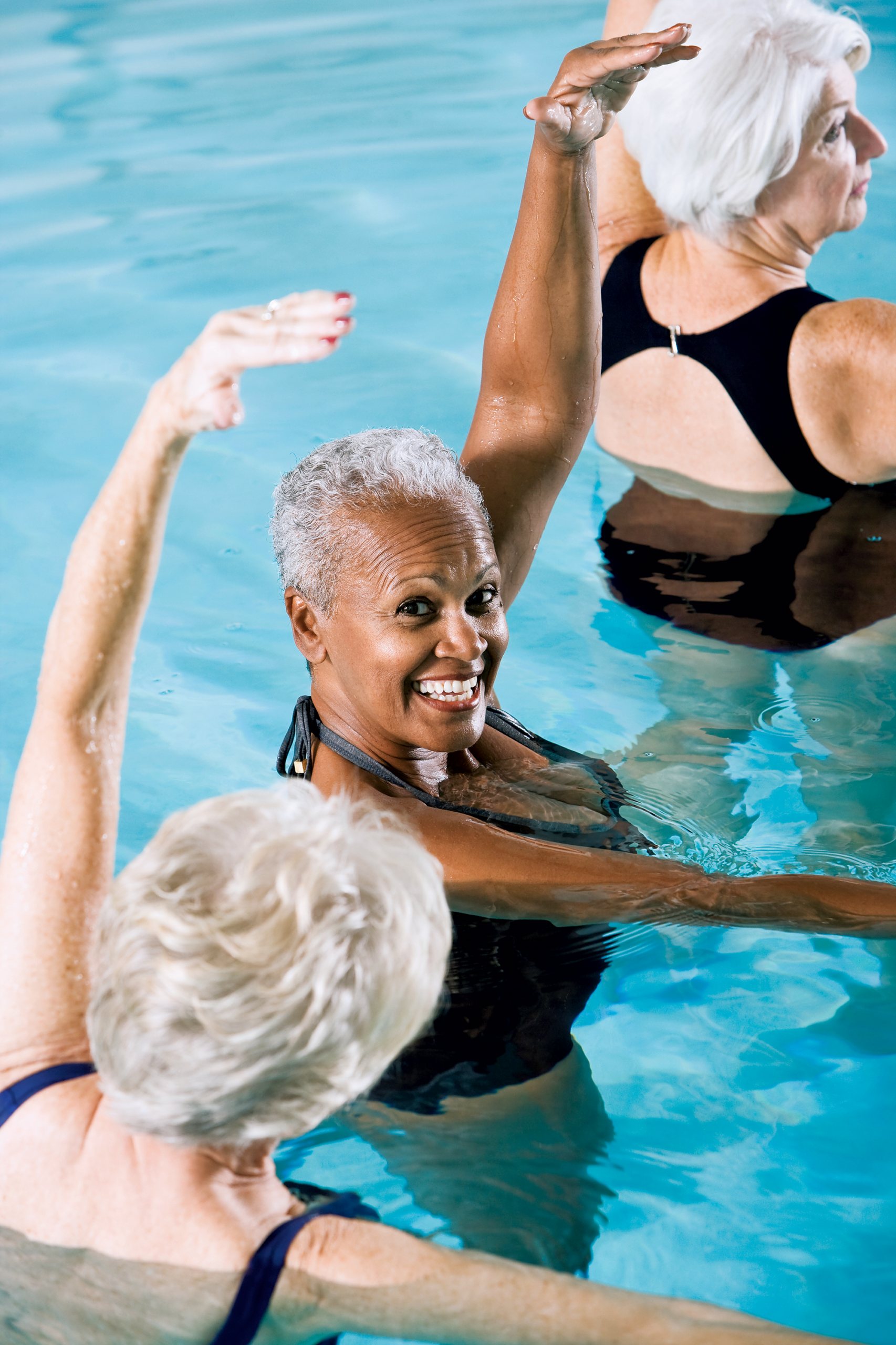Nearly two decades ago, Jessica, 72, was recovering from breast cancer surgery and felt her body had become a foe. She discovered relief and strength in exercises designed for similar women.
As she navigates aging today, Jessica again finds an ally in fitness, regularly swimming four miles a week at the Wilson Aquatic Center in Tenleytown. “Exercise gives the sense that our body is not a burden or piece of baggage, but a source of well-being,” she says.
Area instructors, therapists, doctors, and resident seniors themselves agree: Maintaining a fitness routine rejuvenates the body, mind, and spirit. In addition to building positive health and longevity, fitness also helps prevent falling, one of the biggest concerns for seniors. The following are ways experts suggest maintaining fitness and wellness.
Exercise with intention
A defined objective is the most crucial element of a fitness program, according to physical therapist Dr. Haim Hechtman, co-founder of Point Performance, a comprehensive therapy and rehabilitation center in Bethesda. Before creating a plan with his client, he works to pinpoint this intention, whether it’s walking to and from Balducci’s, sitting with greater ease, or training for the Cherry Blossom 10-Mile Run. “Their mindset needs to be goal-accountable. They have to commit,” Dr. Hechtman says. His co-founder, physiatrist Dr. Mark Klaiman, a 2016 Washingtonian Top Doctor, notes that sometimes one part of the body is accommodating for the pain in another part, and creates a domino effect. For that reason, Point Performance uses a whole-body approach to treating pain, leaving surgery as a last option.
Charge the core
Mobility, flexibility, and balance rely deeply on the core muscles. “The core is the nucleus—it lays the foundation for movement in other parts of the body,” Dr. Klaiman says. One easy method to strengthen the core is sit-to-stand, an exercise using only a chair to hone the muscles of the torso and quadriceps through a repetition of squats. Dr. Hechtman is a proponent not only because it’s pragmatic—“everyone has a chair!”— but also because it offers “unlimited progression,” meaning the exercise can become increasingly more challenging, such as rising to stand on a single leg.
Nurture the spine
Linda Lang, owner of Therapeutic Yoga of Greater Washington and yoga teacher to seniors, marvels at yoga’s ability to remedy the effects of spinal stenosis, or the narrowing of the spinal canal. “We can create length and space, and over time, heal the areas that are narrowing and try to prevent further damage,” she says. During home visits, Lang observes students in their individual environments, and encourages nourishing the backbone by drawing awareness to posture, pulling the navel up and in, lifting the sternum, and slightly lowering the chin.
Flow into better balance
The American Geriatrics Society recommends t’ai chi to stave off falling. This form of moving meditation strengthens the proprioceptive system, sensors that help the body determine where it is in space. Steve McCleary, instructor at Leisure World in Silver Spring, starts t’ai chi classes with flute music. His students credit the ancient martial art with increased stability—many begin with a chair but stop using it after a couple months. His eldest participant is 98.
Find fitness comrades
According to Harvard’s Grant Study, the chief indicator for overall life-satisfaction is warm relationships. Ashburn resident Ibsen Morales, 69, finds camaraderie in his convivial cycling group, whose moniker is FIT—Fools in Training. While the members appreciate humor (they have matching jester t-shirts), they’re serious about biking—some are even training for century rides—and community, gathering for lunch or a few beers following each ride.
And although some of the women in Ghita von Bonsdorff’s Zumba Gold class at the Joy of Motion Dance Center in DC are recent widows, they delight in the exuberant dance set to Latin music. In this class, there are no jumps or turns. “I can see their pure joy. There is no competition in Zumba Gold, just absolute warmth,” von Bonsdorff says. “One woman shares it’s her happiest time of the week.”
Meditate to expand life span
Focusing on the breath, or specific intention, creates a gentle but formidable shield to ward off rumination and may also slow aging. The Telomere Effect (2017) by Elizabeth Blackburn and Elissa Epel suggests that meditation can protect the ends of chromosomes from fraying and extend longevity.
When a thought or emotion arises, as it inevitably will even for a seasoned meditator, the key is to simply notice and return awareness back to the breath. While guiding seniors who are grieving or have terminal illness, Lang prompts them to close their eyes and take a full breath cycle. She asks, “And what comes next? The next decision? The next question?—The next breath.”
A walking labyrinth has become a popular option for those seeking an alchemy of intention, movement, and meditation. Both the Georgetown Waterfront Park and Brookside Gardens in Wheaton offer a spiraling path for peaceful vitality.
***
Relieve Spinal Stenosis

Standing forward bend
1. Stand tall, legs slightly apart. Bend your knees and hold your shoulders. Bow forward. Knees remain soft, as belly lowers over thighs.
2. Feel the belly expand, allowing the waist to lift toward the sky as you relax forward. Use the breath to lengthen the spine. Begin with 3-5 breath cycles.
Standing down-dog
1. Clasp the front edge of the kitchen counter firmly, and step back until your body is at a right angle.
2. Step one foot forward at a time, creating a gentle lunge, and lean in toward the counter with a straight spine.










